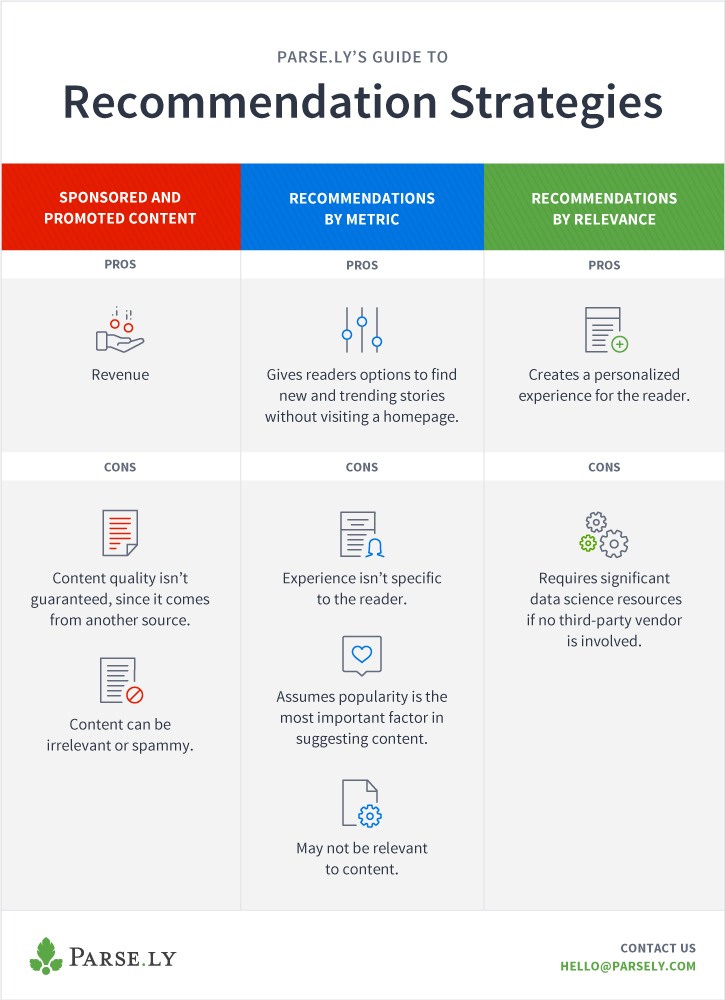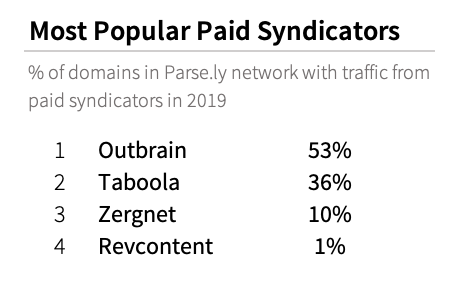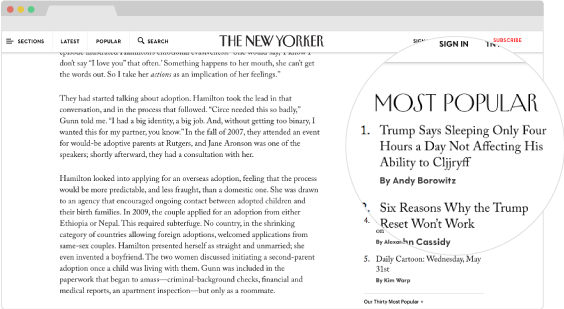What makes a good article recommendation?

Are you already thinking about what you’ll be reading next? On your typical news or content website, articles are queued up so that readers always have opportunities for a next click.
These are called “content recommendations,” and they range widely in what they recommend and how they recommend it. Though they’re practically ubiquitous, their presence is sometimes even surprising to the authors writing the stories they surround.
Organizations evaluating the content they recommend to readers should, like with any product, have a clear understanding of the goals of content personalization. Here, we’ve broken down types of content recommenders, along with the pros and cons of each.

Sponsored and promoted content

The lines between content and advertising sometimes blur on the web, and the popularity of sponsored content (aka native advertising or promoted posts) has continued to rise. The formula involves pay-per-click links that drive readers to off-site content, popularized by companies like Outbrain and Taboola.

While providing much-needed revenue for publishers, common complaints range from irrelevant links to “click-bait” stories and headlines.
Recommendations by metric
Article recommendations based on successful metrics can clue in a reader to make sure they don’t miss anything that’s trending: top by views, most shared, actively commented.

Who’s most likely to click on these? A loyal brand reader will find these helpful, as they don’t want to miss anything on your site and are already actively engaged with other community members. If they’re too broad, though, they could also lose someone’s interest. Variety, relevance and serendipity are often left out of the formula if you only showcase your most popular hits. And large sites can be subject to “traffic echo chambers”, where posts that grow in popularity end up being more heavily promoted in recommendations, thus becoming yet more popular, ad infinitum.
Recommendations by relevance
Finally, we get to recommendations as popularly conceptualized in innovative products like Netflix’s movie recommendation algorithm and Spotify’s personalized music streaming. You could call these “smart” recommendations. For digital content, recommendations by relevance can take into account personalized data (e.g. past visit history), author/section preferences, and contextual information, like traffic source, content tags or natural language processing applied to the text of the articles.

The benefit to this more robust option is well summed-up by Michael Tamblyn, Chief Content Creator of Kobo, an e-book retailer in this article on the science of internet based recommendations from e-comm to music. Tamblyn describes what makes great recommendations valuable:
“Whether they be in person or on a device, they are always the result of sifting huge amounts of information about which books have sold, when and to whom. A great human bookseller does this intuitively — thinking about previous purchases, trends, what’s selling, what friends are reading, what you like and don’t like. We do the same thing using data, analytics and algorithms, social activity, ratings and other data to suggest your next great book”.
How do you decide which kind of content personalization is right for your site?
First, consider your main objective. Maybe it’s to increase fan engagement on your site like it was for the NBA team the Minnesota Timberwolves. Or maybe it’s to recommend relevant content while protecting users’ privacy like it was for The Intercept and The New Yorker.
Then, test! There’s no one right answer for the combination of metrics and tactics you choose to reach your goal. Lucky, with a nimble content recommendation engine, you can innovate until you get the formula just right.
Here are ideas to test to get started:
- Recommend relevant content based on the number of social shares, an indicator that other readers were inspired by the content and motivated to take action.
- Surface the most searched-for articles on your homepage to anticipate readers’ curiosity.
- Enable 1-1 personalization by showing similar content to what a visitor read or watched in the past.
- Encourage subscriptions by showing the articles most popular with returning visitors.
No matter which content recommendations method publishers select, they should keep their eye on the ball: driving a rich relationship with readers by providing that critical next click of relevant content.
Interested in implementing content personalization on your site? At Parse.ly, we have a widely-used and powerful platform that can power recommendations using any of the above strategies. Find out more about how our content personalization engine works by reaching out here.